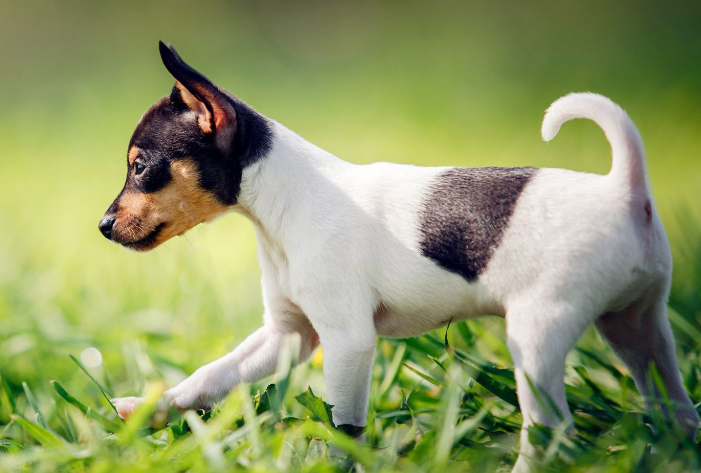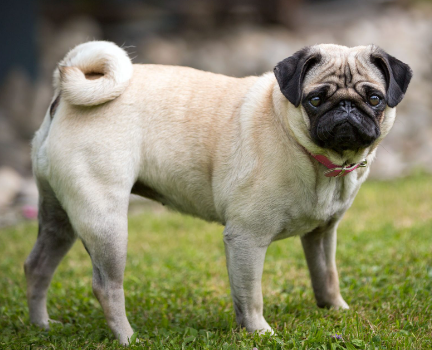The Bernedoodle, a delightful cross between a Bernese Mountain Dog and a Poodle, combines the playful intelligence of the Poodle with the loyal nature of the Bernese. Additionally, this breed is known for being low to non-shedding, making it a suitable choice for most individuals, especially those with allergies.
In my opinion, the Bernedoodle makes for an ideal companion canine. While many are visually striking, they aren’t typically bred for the show ring; instead, they are bred to be by your side whether you’re hiking, snowshoeing, or simply relaxing on the couch watching a movie. Their primary role is to be your devoted friend.
Each Bernedoodle is unique, as the genes from their parent breeds interact in distinct ways. It’s endlessly fascinating to observe the outcomes of these genetic combinations. However, prospective owners should be aware that there can be significant variation within the breed, and it’s important to choose a reputable breeder who can assist in selecting the right dog for their specific needs.
Crossbreeds are often favored by those seeking a blend of traits. When describing my own experiences with these dogs, I’ve noticed remarkable consistency among them, with well-bred Bernedoodles exhibiting similar characteristics of sweetness, affection, and composure. However, it’s crucial to emphasize the importance of responsible breeding practices. Over the past century, both Bernese Mountain Dogs and Poodles have been extensively bred, leading to health and temperament issues in some individuals. Poorly bred Bernese may display stubbornness and skittishness, while inadequately bred Poodles may exhibit hyperactivity and neurotic behavior. Finding healthy specimens with desirable traits can be challenging, but it’s a pursuit worth undertaking for those seeking a loving and balanced companion.
- Height: 23 to 29 inches
- Width: 70 to 90 pounds
- Bernedoodle Lifespan: 12 to 18 years
- Color: Variable; the most common colors are black, black and white, black and brown, or tri-color.
Breed Characteristics
The Bernedoodle epitomizes the role of a loyal companion canine. Drawing from the intelligence of its Poodle lineage and the charming, carefree demeanor of the Bernese Mountain Dog, Bernedoodles thrive when surrounded by their families, including children, eagerly participating in both playtime and snuggle sessions.
Given their relatively recent emergence, it’s challenging to predict the exact traits of individual pups. Some may exhibit more Poodle characteristics, while others lean towards the Bernese temperament. However, Bernedoodle enthusiasts consistently appreciate their kindness, playfulness, intellect, and affection, along with their hypoallergenic qualities—a boon for allergy sufferers.
Beyond their personalities, Bernedoodles boasts a range of appearances, with coats that can vary from curly and wavy to straight, showcasing an array of colors. Available in three sizes—tiny, miniature, and standard—determined by the size of the Poodle parent (toy, mini, or standard), these dogs offer options suitable for various living arrangements. Smaller Bernedoodles are well-suited to apartment living, while larger ones thrive in homes with ample outdoor space for energetic play.
This adaptable breed typically requires moderate exercise, fulfilled by at least one substantial daily walk. Whether you’re seeking a faithful companion for yourself or a delightful addition to your family, Bernedoodles are a delightful choice, blending sweetness, intelligence, and good health to bring joy to all they encounter.
| General Health: 4/5 Point | Energy Level: 4/5 Point |
| Shedability: 1/5 Point | Trainability: 4/5 Point |
| Intelligence: 5/5 Point | Tendency to Chew: 4/5 Point |
| Size: 3/5 Point | Family and kid-friendliness: 5/5 Point |

History Of Bernedoodle
Sherry Rupke, a Canadian canine breeder and the owner of Swissridge Kennels, introduced the Bernedoodle hybrid in 2003 to cater to her clientele who admired the Bernese Mountain Dogs but sought a canine with a longer lifespan.
“I initially chose to crossbreed the two breeds due to the health advantages of mixed-breed puppies,” explains Rupke. “Another reason was their suitability for most individuals, particularly those with allergies (when bred responsibly). If you do have allergies, it’s crucial to communicate with your breeder so they can match you with the appropriate coat type.”
According to Derek Hall’s “The Ultimate Guide to Dog Breeds,” the Bernese Mountain Dog originated from the interbreeding of original Swiss herding dogs and a type of guard dog brought by invading Roman armies to what is now Switzerland approximately 2,000 years ago. This sturdy and sizable dog falls under the working group and has historically been utilized to pull carts laden with produce. Currently, the Bernese thrives best in rural settings where it can roam freely.
Regarding the Poodle, Hall notes that this lively breed originated in Germany before being popularized in France. Initially used as truffle hunters and retrievers due to their affinity for water, Poodles are renowned for their intelligence.
The Bernedoodle inherits the intelligence and vitality of the Poodle alongside the affectionate nature towards children typical of the Bernese, while being less prone to the health issues commonly associated with the latter, as per Rupke’s observations.
Since the Bernedoodle is a hybrid, it does not receive recognition from the American Kennel Club (AKC). However, it is acknowledged by the American Canine Hybrid Club, the Designer Breed Registry, and the International Designer Canine Registry.
Appearance
While Bernedoodles typically come in black, tan, or white colors, Poodles exhibit a diverse array of coat colors, leading to potential variations in the Bernedoodle’s appearance. Their fur may range from tightly curled, resembling their Poodle ancestors, to straight, akin to the Bernese Mountain Dog.
Regardless of coat type, Bernedoodles possess a complete digestive system, rendering them well-suited for various climates, including cold and rainy weather. Available in small, miniature, and standard sizes, Bernedoodles offer flexibility to cater to each individual’s needs and lifestyle. Standard Bernedoodles can reach heights of up to 29 inches. Their coats can be curly, wavy, or straight, with a texture akin to a dog’s and hypoallergenic properties.
The Bernedoodle’s coat serves as protection against both summer heat and winter cold, providing insulation throughout the seasons. They boast a square build, with round-shaped, dark eyes that exude warmth and character. Their ears hang close to their heads, complemented by a long, triangular muzzle and a bushy tail held high, contributing to their distinctive appearance.
Temperament
Gentle and playful, Bernedoodles make ideal family companions. They have a special affinity for younger children and seamlessly transition into lifelong companions as children mature into adults. While highly intelligent, they possess a joyful demeanor and thrive on the attention and affection of their human companions.
Although deeply devoted to their families, Bernedoodles may initially exhibit timidity and wariness around strangers. Proper socialization is essential for acclimating them to new people and situations, ensuring they remain affectionate and amiable in all circumstances. With positive reinforcement training, they can showcase their charming and endearing qualities to the fullest.
Sarah Hodgson, an esteemed author, coach, and applied behaviorist affiliated with the International Association of Animal Behavior Consultants, admires the disposition of Bernedoodles. “As a coach, I’ve witnessed their popularity soar for over a decade,” she remarks. “What I admire most about this breed is that when obtained from a conscientious and reputable breeder, you inherit the gentle, serene nature of the Bernese, fused with the sociability, intelligence, and playful wit of the Poodle.”
Personality
It wasn’t until the latter half of the 19th century that the Bernese Mountain Dog began to capture the interest of breeders and dog enthusiasts, who then endeavored to standardize and refine the breed, albeit with varying degrees of success. The first breed club for Bernese Mountain Dogs in England was not established until 1971. In contrast, the Standard Poodle has roots as a working breed, initially developed as a skilled water-retrieving dog.
Contrary to popular belief, the distinctive haircuts associated with Poodles were not driven by fashion trends. Instead, they originated from owners’ practical concerns, aiming to ensure their dogs remained buoyant and agile while swimming in lakes. Thus, they would trim excess hair, focusing on keeping essential organs and joints protected.
The Miniature Poodle was selectively bred as a smaller version of the original Poodle, catering to owners who preferred a more compact canine while still appreciating the breed’s personality and eagerness to work. When it comes to Bernedoodles, their appearance, behavior, and temperament can vary widely, as they may inherit traits from either parent breed or a combination of both.
Health
The average lifespan of a Bernedoodle ranges from 12 to 18 years. Fortunately, this hybrid breed tends to avoid many of the health issues associated with the Bernese Mountain Dog.
The Bernese side of their ancestry typically has a shorter lifespan of around seven years, with a higher incidence of cancer, hip dysplasia, elbow dysplasia, heart conditions, and epilepsy.
While Bernedoodles generally enjoy better health than purebred Bernese Mountain Dogs, they can still be susceptible to hip dysplasia, elbow dysplasia, eye problems, and certain allergies,” Christman explains. Nonetheless, Bernedoodles are generally robust and make excellent additions to families.
However, it’s important to remain vigilant for warning signs such as excessive drooling and rapid weight gain.
Skin problems like hot spots can also occur in Bernedoodles due to their dense coats. Hot spots are typically caused by excessive licking or chewing of a particular area, often exacerbated by poor coat maintenance.
This underscores the importance of regular grooming—a Bernedoodle is more likely to develop skin issues if its coat becomes dirty and tangled.
Health Problem
Bernedoodles typically enjoy better health than their parent breeds, boasting a longer lifespan. However, they still contend with several primary health concerns.
hipsterism Dysplasia
This condition, which affects the joints of large dogs, can be extremely painful and debilitating. It results in the improper fitting of the hip joints, leading to various issues such as discomfort, persistent wear and tear, inflammation, and ultimately, lameness.
Elbow Dysplasia
This condition impacts the elbow joint, with its precise cause remaining unknown. It may arise from abnormal cartilage development, injuries, or nutritional deficiencies. When bone growth fails to align properly, the affected joints experience increased pressure, leading to further damage, pain, and eventual lameness.
Skin Issues
Skin issues associated with Bernedoodles encompass allergies, hot spots—areas of inflamed skin caused by excessive licking—and itching, culminating in the formation of moist scabs on the skin.
Bone Issues
Although a Bernese parent may contribute significantly to hereditary traits, issues with bone health can also arise.

Care
Tiny and Miniature Bernedoodles are well-suited to apartment living, whereas Standard Bernedoodles thrive in environments with ample outdoor space. Generally, this breed doesn’t require significant specific space, and as long as their moderate needs for physical and mental stimulation are met, they should not exhibit destructive behavior.
They thrive on human companionship, so minimizing time spent alone is beneficial.
Similar to Poodles, Bernedoodles are relatively intelligent, allowing them to learn both positive and negative behaviors quickly. Consistent training is essential. Early socialization and exposure to other dogs and humans are recommended to ensure they remain well-behaved when encountering new people or environments.
Best Food For
- The Farmer’s Dog Fresh Dog Food Subscription
- Pedigree Adult Dry Dog Food – Chicken & Vegetable
- Blue Buffalo Life Protection Formula Natural Adult Dry Dog Food, Chicken and Brown Rice 30-lb
- No Puppy Food Grain Free Dry Food With Bc30 Probiotic And Dha (Salmon And Peas Recipe, 24Lb Bag)
- Hill’s Prescription Diet Dry Dog Food
Feeding
The appropriate amount of food to feed a Bernedoodle varies based on factors such as its size, age, and activity level, making it a highly individualized matter.
Standard Bernedoodles can have hearty appetites and may eagerly consume whatever food is offered, requiring careful monitoring of their food intake and weight management alongside ample physical exercise.
Consulting with your veterinarian for tailored recommendations that suit your specific dog’s needs is advisable.
Grooming
Throughout their lives, Bernedoodles shed very little. Additionally, they tend to be more hypoallergenic compared to other breeds, making them an ideal choice for individuals with allergies. Despite their low shedding, regular grooming is still essential to prevent their coat from becoming tangled.
Brushing should be done once or twice a week to maintain their coat’s health and prevent matting. This grooming routine not only keeps their fur in good condition but also provides an opportunity for bonding between the owner and the dog.
Regular grooming also includes trimming their coat every few months, as well as keeping their nails trimmed and their eyes and ears clean. These grooming tasks are crucial for maintaining the overall health and well-being of the Bernedoodle.
Training
Training a Bernedoodle, like any other puppy, is generally easier when they are young and eager to learn. They are intelligent dogs and can be successfully trained, but they may also exhibit mischievousness and stubbornness. However, as they mature, these tendencies often diminish, and consistent training with patience and consistency yields positive results.
Proper training is crucial for preventing hyperactivity in this breed. Positive reinforcement training methods are highly effective and should be employed consistently. Additionally, socialization plays a vital role in a Bernedoodle’s development, as they may exhibit wariness towards strangers if not adequately exposed to different people and environments during their early months.
Exercise
Bernedoodles require moderate exercise to satisfy their active and energetic nature. Daily long walks are typically enough to keep them content and tired. They enjoy engaging in various physical activities, often seeking to spend additional time with their family due to their playful and energetic disposition.
They demonstrate significant adaptability to different lifestyles and environments, thriving even in less active households as long as they maintain their daily routine. In addition to playtime, they also enjoy close physical contact with humans, making them excellent companions.
Adoption Center
Other Dog Breeds and Further Research
FAQs
Bernedoodle PuppyDog Price
The Bernedoodle’s cost is around$ 4000 to$ 6000.
What are the cons of a Bernedoodle?
Bernedoodles dislike being left alone for long ages of time not suitable for people who spend all day at work. Berne Etches are largely active and not suitable for people who cannot walk the canine for a couple of hours each day. fixing a Bernedoodle at a canine fixing salon can be precious.
How big will a Bernedoodle get?
The standard Bernedoodle can reach up to 29 elevations in height and weigh up to 90 pounds. A mini is between 18 – 22 elevation altitudinous and weighs 20 – 45 pounds. A” bitsy,” bred from a toy poodle, is only 12 – 17 elevation and weighs 10 – 24 pounds, according to the United Bernedoodle Registry.
What’s the lifetime of a Bernedoodle?
The average lifetime of a Bernedoodle is 12 times. This can vary significantly depending on your Bernedoodle’s size, generation, and health. For illustration, standard Bernedoodles live 8- 12 times, mini Bernedoodles 10- 14 times, and bitsy( aka toy) Bernedoodles 12- 16 times on average.
What’s the personality of a Bernedoodle?
Bernedoodles Have Gentle and Caring grains
The Berner is known for being a gentle mammoth — case with children, tender and devoted to his family. He’s overall gracious and easygoing. still, this doesn’t mean he’s a pushover to train.












3 thoughts on “Best Information About Bernedoodle Dog For You || Mini Bernedoodle”